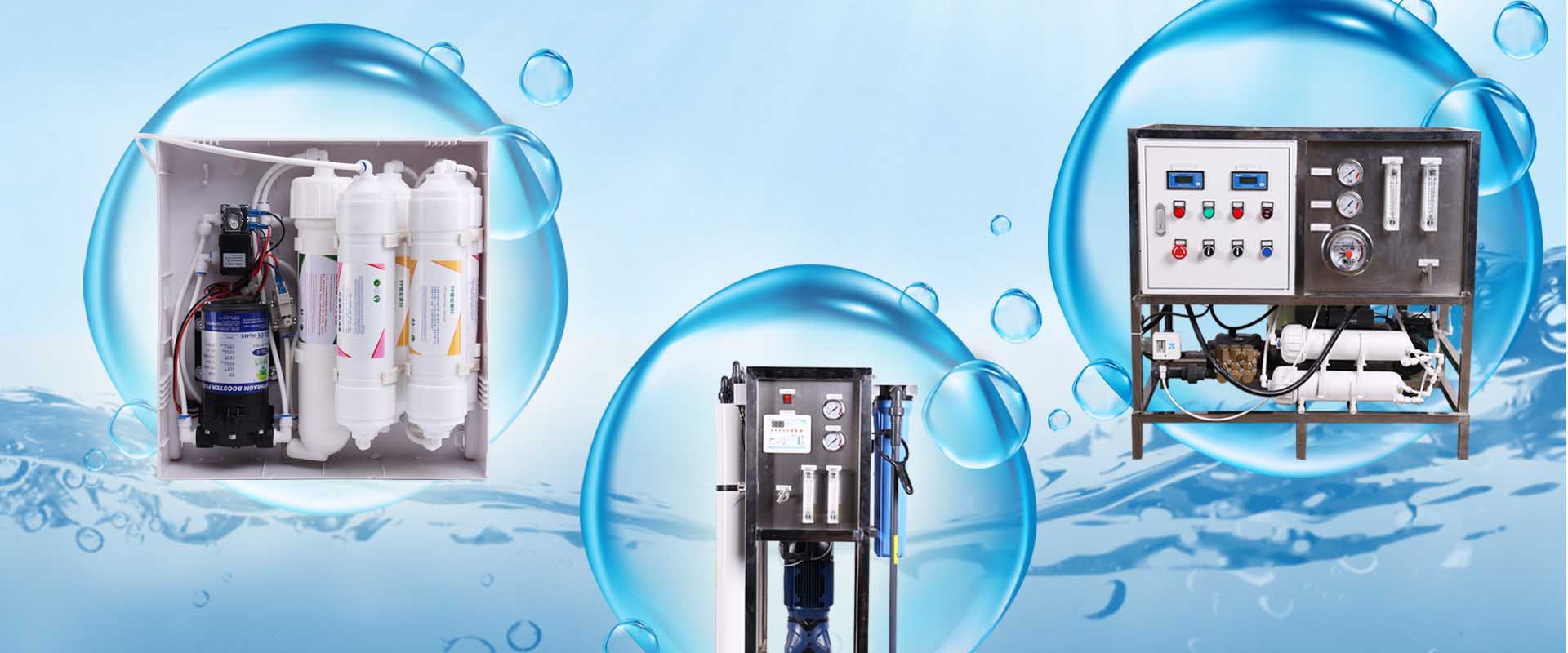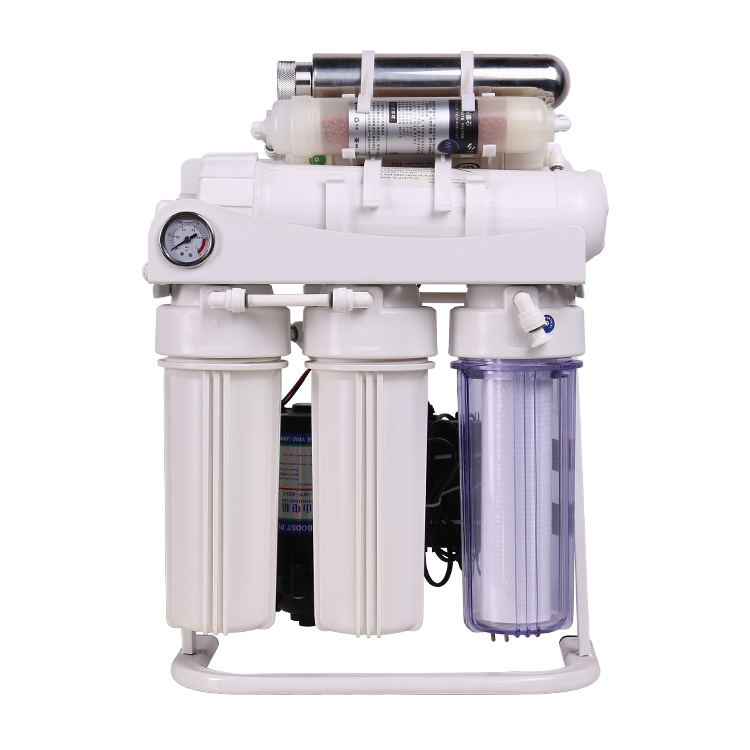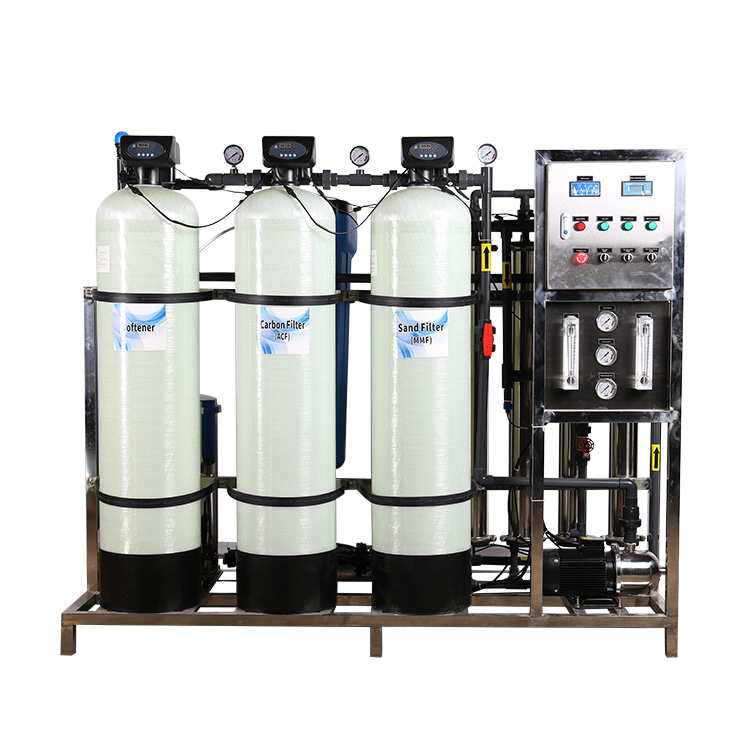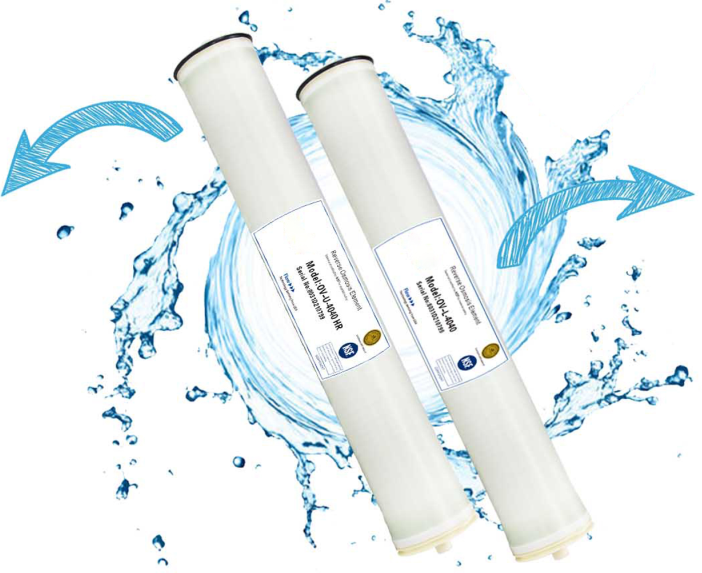What does Reverse Osmosis?
Reverse osmosis or reverse osmosis water system, referred to as RO, where you remove dissolved solids and other contaminants from waterby forcing the water through a semi-permeable (reverse osmosis membrane), to separate and remove dissolved solids, organic, pyrogens, submicron colloidal matter, color, nitrate and bacteria from water.


Feed water is delivered under pressure through the RO membrane, where water permeates the minute pores of the membrane and is delivered as purified water called permeate water. Impurities in the water are concentrated in the reject stream and flushed to the drain is called concentrate water.

Reverse osmosis (RO) is one of the oldest and most popular separation techniques used mainly for the purification of water.
Today, this technique is extensively used by many around the world to purify water for industrial, residential, commercial and scientific purposes. The reverse osmosis machine includes industrial water treatment systems, commercial water treatment systems and home water purification system.
How does Reverse Osmosis Work?
Reverse osmosis involves the appliaciton of pressure(usually greater than the osmotic pressure) on one side of the solution where a RO membrane is placed in between the solutions.This membrane is used to filter out contaminants down to the smallest particles.The contaminants are often referred to as RO membrane.


One of the advantages of RO is that they work at the molecular level – meaning they include a RO membrane filter that’s so small only water molecules can pass through it.This process generally means you end up with some of the cleanest,drinking water availabl

There are different pore sizes of membranes used for reverse osmosis.While a small pore size does a better job of filtration,it takes longer time to move water. It’s sort of like trying to pour water through a strainer (large holes or pores) compared to trying to pour it through a paper towel (smaller holes).However, reverse osmosis is different from simple membrane filtration because it involves diffusion and is affected by flow rate and pressure.
What does Reverse Osmosis?
The effectiveness of a reverse osmosis water filtration for various contaminants depends on the size of those contaminants. The smallest of bacteria are approximately 0.2 microns in size. That is very small, but it’s actually much larger than a water molecule. Water molecules are approximately 0.0001 microns in size, and the holes in reverse osmosis membranes are only a little larger than that.So if there is bacteria in your water and your drinking water already filtered by a reverseosmosis system, the bacteria will not make it past the filter because they will be too large to pass through the membrane’s pores.
In other words, a reverse osmosis filter does remove bacteria from water.Reverse Osmosis technology is effective at filtering out most forms of bacteria.
As with all filtration systems however, in order for reverse osmosis water purifier to effectively remove bacteria, the reverse osmosis water filter must be replaced regularly and installed correctly.to pass through the membrane’s pores. .

Benefits of Reverse Osmosis
Reverse Osmosis water treatment is a great first step in residential home water treatment.And,for commercial water supplies,RO can filter out the most concerning contaminants like dissolved soilds lead,arsenic,and other heavy metals,as well as troublesome dissolved hard minerals.Capacity is one of the important limitaions to look at when considering RO filtraition for home or office. You need to confirm that how much water flow that you need to produce,
In all cases, to get the best possible solution for you water treatment needs, it’s important to start with a water test to determine what’s in your water. For reverse osmosis systems especially, it’s important to understand not only what is your water (iron, calcium, chlorine, etc.) but how much of those contaminants may be present. Good solution will be confirmed once you have the water test report.


